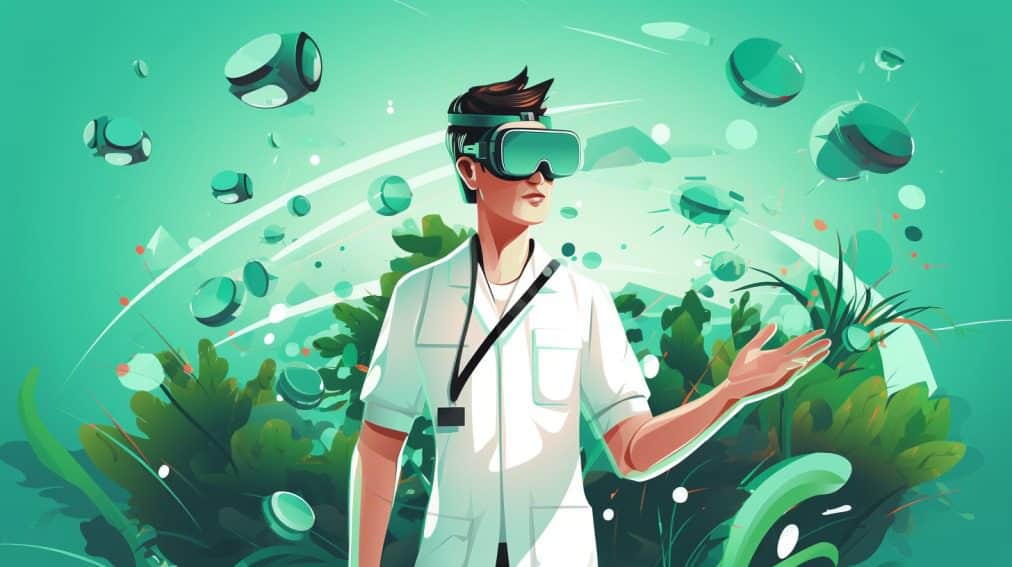Imagine being able to design a drug in a virtual environment, simulate a surgery before performing it, or train medical personnel in a safe and controlled environment. It is not the future, but almost the present of medicine and the pharmaceutical industry, thanks to the rise of VR, the virtual reality. Here are 6 possible fields of application.
Staff training with VR in medicine
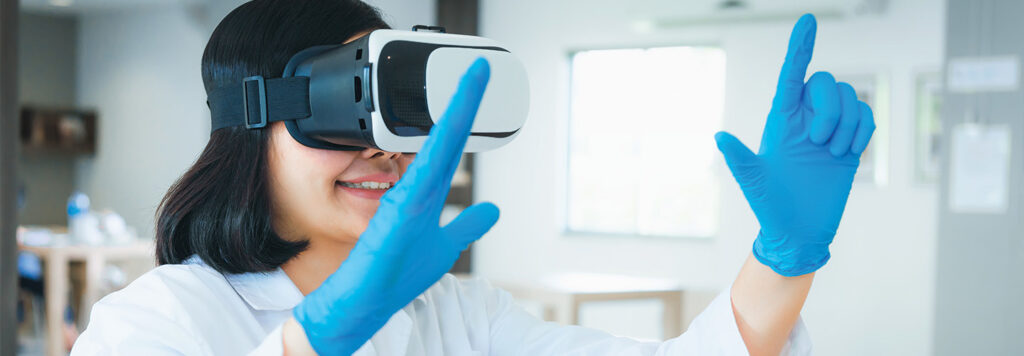
Personnel training is one of the main fields of application of VR in medicine. Thanks to this technology, doctors and healthcare staff can train in a safe and controlled virtual environment, where they can practice without putting patients' health at risk. A real flight simulator for doctors, if you will.
An example of how VR is being used in medical staff training comes from Johns Hopkins School of Nursing. This prestigious institution has implemented VR training at all levels, from prelicensure nursing to doctorate. Training areas include resuscitation and other critical procedures. VR in medicine offers a safe and controlled environment in which prospective doctors and nurses can gain hands-on experience without putting patients' health at risk. This type of training is particularly useful for preparing medical personnel for emergency situations and complex procedures that require precision and speed.
Drug design with VR
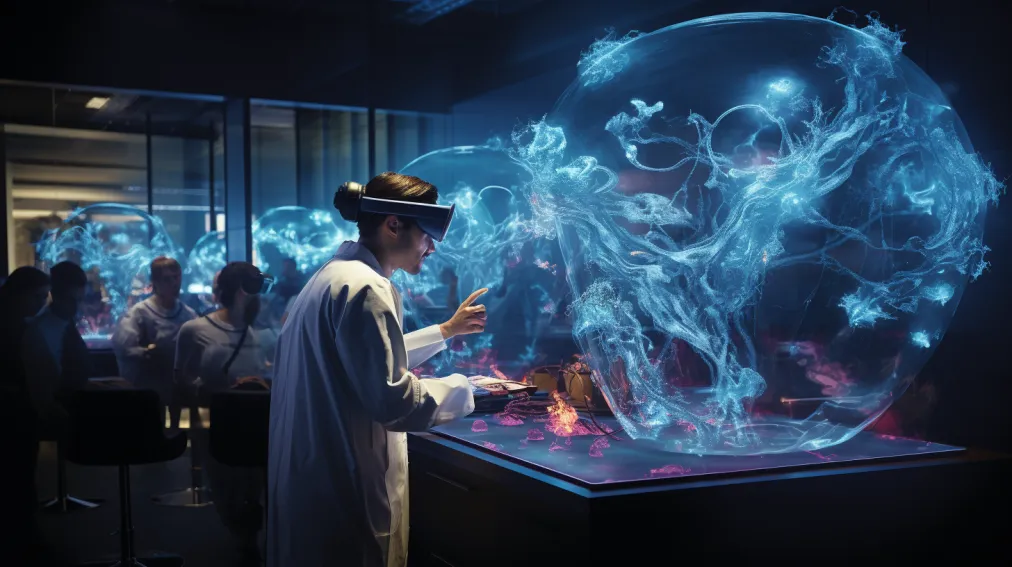
Another interesting application field of VR in medicine is drug design. With VR, researchers can visualize and manipulate drug molecules in a three-dimensional environment, making the design process more intuitive and precise. It's like having a chemistry lab in your living room, only much more advanced.
An example of how VR in medicine is used in drug design can be found in an article published on Nature. In this article, the authors discuss how virtual reality can be used to visualize and manipulate drug molecules in a three-dimensional environment. This makes the design process more intuitive and precise, allowing researchers to “see” molecular interactions in a way that would not be possible with traditional methods. This is just one example of how VR is revolutionizing medicine and the pharmaceutical industry, offering new tools and techniques to improve our understanding and treatment of disease.
Simulation of surgical procedures in VR
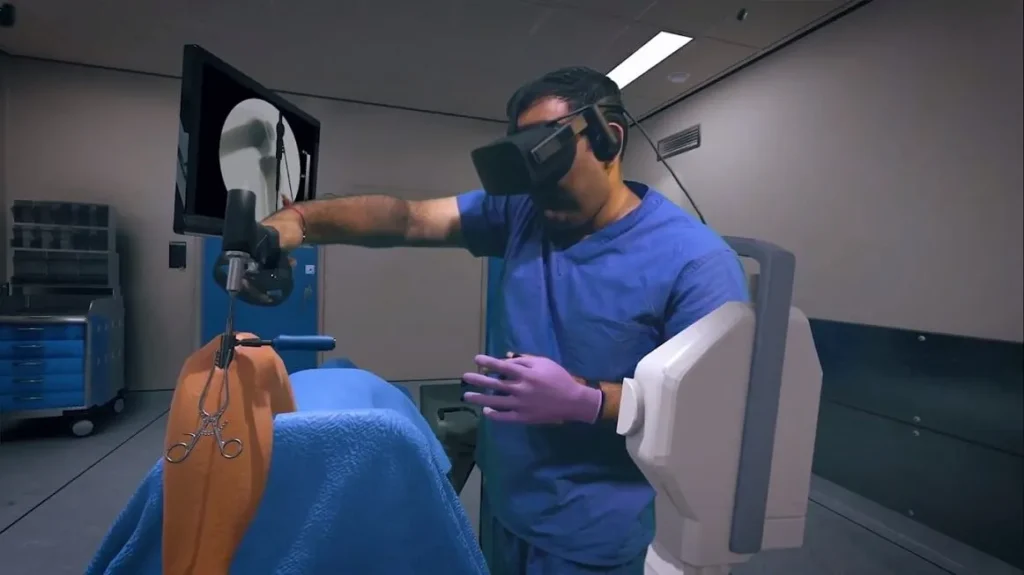
VR in medicine also proves to be a precious ally for the simulation of surgical procedures. Surgeons can practice on virtual models before undertaking a real operation, thus reducing the risk of errors and improving the effectiveness of treatment. A bit like having a dress rehearsal before the big show.
An example? Bone VR, a solution that allows orthopedic surgeons to virtually perform a leg operation, helping to improve their precision and ability to move. This solution also has a built-in analytics system that evaluates student performance based on time, accuracy, and other vital metrics. The goal is to allow students to gain experience before conducting interventions on real patients.
Therapy and rehabilitation with VR in medicine
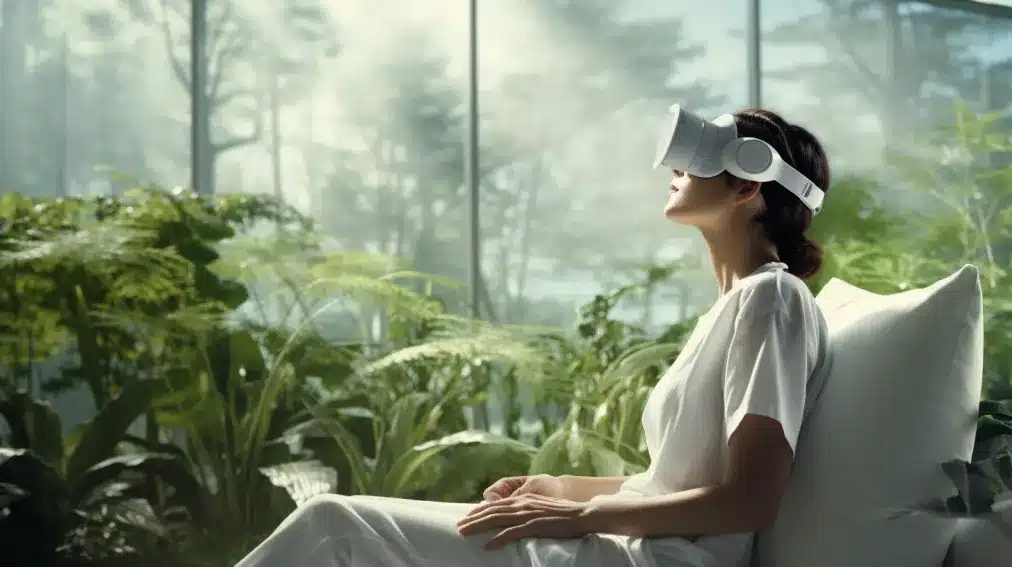
But it doesn't end there. VR in medicine also finds application in therapy and rehabilitation, allowing patients to perform physiotherapy exercises in a stimulating and engaging virtual environment. A way to make rehabilitation less boring and more effective. Who said physical therapy has to be a hassle?
An example of how VR is being used in therapy and rehabilitation can be found in a study published on PubMed. The study examined the effect of virtual reality on patients' ability to balance and walk suffering from Parkinson's disease. The patients were divided into two groups: an experimental group that received VR rehabilitation therapy and a control group that received conventional physical therapy. Both groups followed a therapy program of 45 minutes a day, 5 days a week, for 12 weeks. The results showed that, after treatment, both the experimental and control groups showed significant improvements in balance and walking scores. However, the group that received VR rehabilitation therapy showed significantly greater improvements than the control group.
Visualize complex data with VR
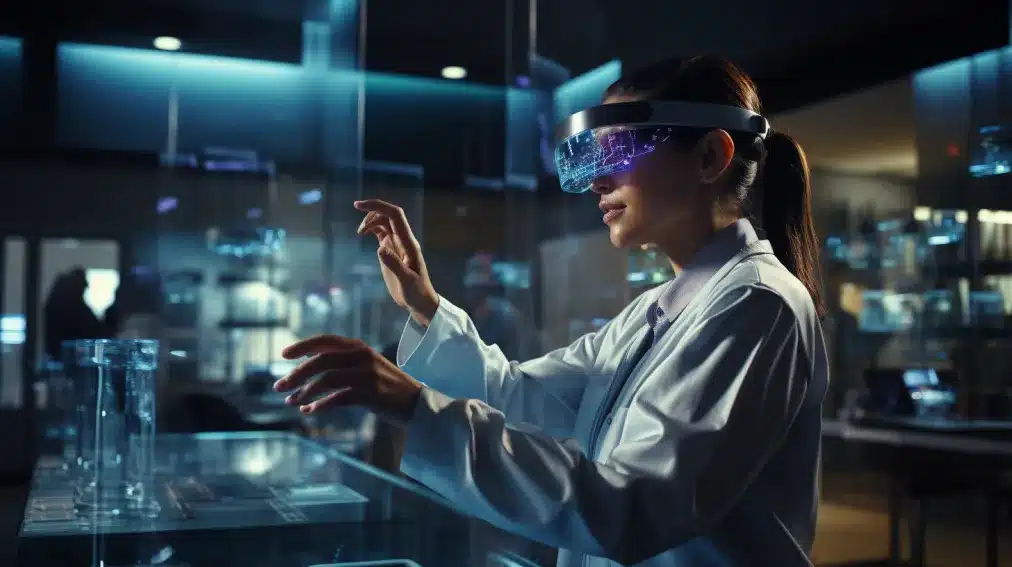
VR in medicine can also be used to visualize complex data in a more intuitive and understandable format. Imagine being able to “see” the data of a clinical experiment in 3D, or explore a three-dimensional model of a cell. A real journey into the heart of science.
An example of visualizing complex medical data with VR is described in an article published on Journal of Digital Imaging. The article explores the use of virtual reality for viewing medical images, focusing on virtual reality as an alternative to slice-based medical analysis workstations, bringing more immersive three-dimensional experiences that could aid in analysis. The article highlights that virtual reality appears to remain a promising technology for medical analysis, but has not yet reached its true potential. The findings suggest that prerequisites such as real-time performance and minimum latency represent major limitations for clinical adoption and need to be addressed. There is also a need for further research comparing mixed realities and currently used technologies.
Promotion and marketing with VR in medicine
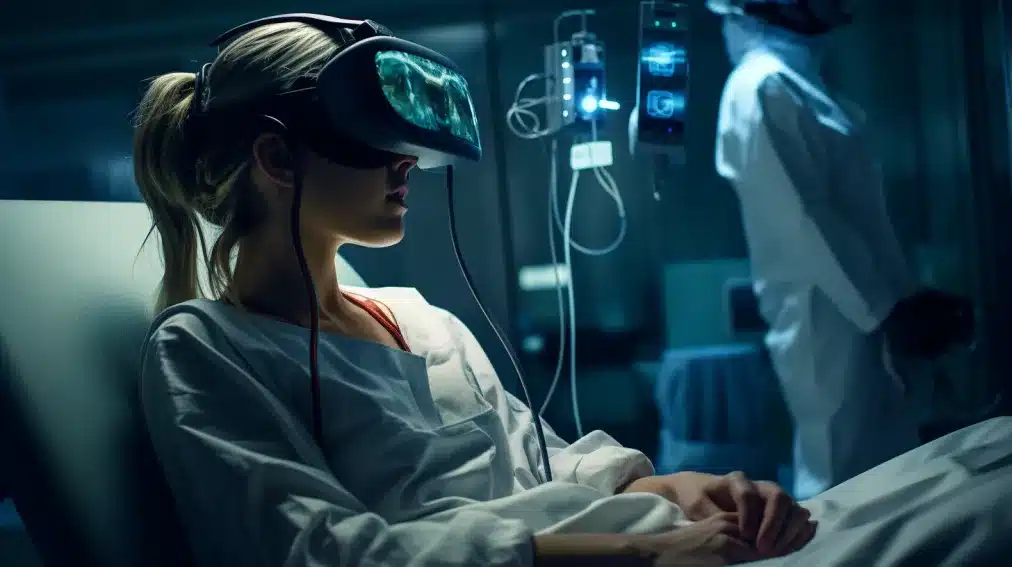
Finally, VR can also be used for promotion and marketing. Pharmaceutical companies can create engaging virtual experiences to present their products to doctors and patients, making communication more effective and memorable. Because, let's face it, a bit of entertainment never hurts.
An interesting example of how VR is used in medical marketing can be found on the blog of Softeq. The article talks about how the use of virtual and augmented reality can improve the accuracy of blood draws, reducing patient fear. When nurses use these technologies, the accuracy of blood samples rises to 90%. This could incentivize patients to visit clinics that use these technologies, thus improving the patient experience and reputation of the clinic. In this way, VR not only improves healthcare but also becomes an effective marketing tool.
In summary, VR is revolutionizing medicine and the pharmaceutical industry, making treatment safer, more effective and… fun. Because, as Mary Poppins said, "with a little sugar the pill goes down". And if sugar is the VR, then the pill not only goes down, but it's good for you.
